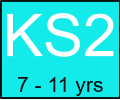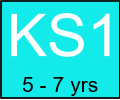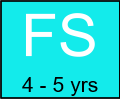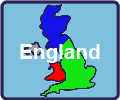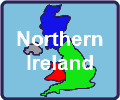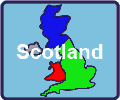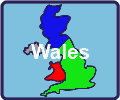UK National Curriculums for handwriting
UK National Curriculums for handwriting - FS
Foundation Stage (4 - 5 year olds)
The degree of focus on handwriting in the National Curriculums varies depending on the area of the UK a school is situated, however the one consistent element in all the UK National Curriculums is that handwriting needs to be legible for the reader.
England
Reception (4 - 5 year olds)
The statutory framework for the early years foundation stage – 14th July 2025
Early Learning goals - Literacy
"ELG: Writing (page 14)
Children at the expected level of development will:
- Write recognisable letters, most of which are correctly formed;
- Spell words by identifying sounds in them and representing the sounds with a letter or letters;
- Write simple phrases and sentences that can be read by others.”
Early Learning goals - Physical Development
"ELG: Gross Motor Skills (page 13)
Children at the expected level of development will:
- Negotiate space and obstacles safely, with consideration for themselves and others;
- Demonstrate strength, balance and coordination when playing;
- Move energetically, such as running, jumping, dancing, hopping, skipping and climbing.
"ELG: Fine Motor Skills (page 13)
Children at the expected level of development will:
- Hold a pencil effectively in preparation for fluent writing – using the tripod grip in almost all cases;
- Use a range of small tools, including scissors, paint brushes and cutlery;
- Begin to show accuracy and care when drawing.”
Department of Education: Early years foundation stage statutory framework - For group and school-based providers Setting the standards for learning, development and care for children from birth to five Published: 14 July 2025, Effective: 1 September 2025, © Crown copyright 2025
Development Matters Non-statutory curriculum guidance for the early years foundation stage; September 2020 Revised September 2023
The Department for Education has also published this additional document to support and guide practitioners in developing a varied and rich curriculum that meets the requirements of the statutory framework for early years foundation stage.
Development Matters Non-statutory curriculum guidance for the early years foundation stage; September 2020 Revised September 2023
Northern Ireland
Year 1 (4 - 5 year olds)
Literacy Indicators: Progression in Writing
By the end of Year 1 most children should:
- Understand that writing is formed directionally, one word at a time, for example, left to right or in lists;
- Begin to problem-solve how to write words through beginning to apply sound-symbol correspondence, using familiar words to make new words or finding words in the environment;
- Use a comfortable and efficient pencil grip with some control;
- Begin to form some letters correctly, for example, the letters in his or her name.
‘‘Northern Ireland Curriculum: Language & Literacy in the Foundation Stage Framework for Literacy Development: produced by the CCEA, copyright on website 2016’
Scotland
P1 (4 - 5 year olds)
Literacy & English: Tools for writing – using knowledge of technical aspects to help my writing communicate effectively within and beyond my place of learning:
Experiences & Outcomes:
I explore sounds, letters and words, discovering how they work together, and I can use what I learn to help me as I read or write. ENG 0-12a / LIT 0-13a / LIT 0-21a
As I play and learn, I enjoy exploring interesting materials for writing and different ways of recording my experiences and feelings, ideas and information. LIT 0-21b
Benchmarks to support practitioners’ professional judgement:
- Forms most lowercase letters legibly.
- Uses a pencil with increasing control and confidence.
- Knows the sounds of lowercase and some uppercase letters.
- Leaves a space between words when writing.
- Writes words from left to right.
- Makes an attempt to spell familiar words correctly.
- Makes an attempt to use a capital letter and a full stop in at least one sentence.
Education Scotland: Benchmarks Early Level All Curriculum Areas: March 2017’
Wales
Reception (4 - 5 year olds)
Curriculum for Wales: Foundation Phase Framework: Language, Literacy and Communication Skills:
Strand: Writing
Children are able to (areas associated with handwriting):
- Mark make or write in response to a variety of stimuli on subjects that are of interest or importance to them including stories and personal experiences.
- Produce pieces of emergent writing.
- Convey meaning through pictures and mark making.
- Copy and write letters, words and phrases, e.g. from the environment or those modelled by the practitioner.
- Use written language within role play and active learning.
- Hold writing instrument appropriately.
- Write from left to right.
- Discriminate between letters.
- Distinguish between upper and lower case letters and show an awareness of full stops.
Foundation Phase Skills Ladders for Assessment
Age range 48 months to 60 months (4 to 5 year olds)
Outcome 3: Handwriting
Children able to: recognise the alphabetic nature of writing and write letters and simple words and phrases, writing from left to right.
Children may be observed: discriminating between letters, applying their phonic knowledge to write letters and simple words/phrases, e.g. from the environment or high-frequency words. They will consistently write from left to right when producing pieces of emergent writing.
Outcome 3: Holding a mark-making implement
Children able to: hold a crayon/pencil using two or three fingers and thumb.
Children may be observed: holding a crayon/pencil using their thumb and two or three fingers, they sometimes revert to earlier grips but do not yet show a dynamic grip. Some grips which fit this description are inefficient and should be discouraged (examples given on p87).
Outcome 3: Fine manipulation
Children able to: string beads onto a lace and are able to manipulate and lock together appropriate resources.
Children may be observed: locking together jigsaw puzzles and construction materials; fluently threading a few large beads onto a hard tipped string; making a dough model with some attempts at detail; tapping a touchscreen, using a computer mouse, doing up front zips and large buttons.
Accessing technology would include some independent use of a mouse and touchscreens.
‘Curriculum for Wales: Foundation Phase Framework (revised 2015): OGL 2015; Digital ISBN 978 1 4734 4217 7
‘Welsh Government: Foundation Phase Profile Handbook; OGL: September 2017; Digital ISBN 978 1 78859 477 6’
UK National Curriculums for handwriting - KS1
Key Stage 1 (5 - 7 year olds)
The degree of focus on handwriting in the National Curriculums varies depending on the area of the UK a school is situated, however the one consistent element in all the UK National Curriculums is that handwriting needs to be legible for the reader.
England
Key Stage 1 (5 - 7 year olds)
Year 1 (5 - 6 year olds)
Statutory Requirements - Handwriting
- Pupils should be taught to:
- sit correctly at a table, holding a pencil comfortably and correctly
- begin to form lower-case letters in the correct direction, starting and finishing in the right place
- form capital letters
- form digits 0-9
- understand which letters belong to which handwriting ‘families’ (i.e. letters that are formed in similar ways) and to practise these.
Notes and guidance (non-statutory)
Handwriting requires frequent and discrete, direct teaching. Pupils should be able to form letters correctly and confidently. The size of the writing implement (pencil, pen) should not be too large for a young pupil’s hand. Whatever is being used should allow the pupil to hold it easily and correctly so that bad habits are avoided.
Left-handed pupils should receive specific teaching to meet their needs.
Year 2 (6 - 7 year olds)
Statutory Requirements – Handwriting
Pupils should be taught to:
- form lower-case letters of the correct size relative to one another
- start using some of the diagonal and horizontal strokes needed to join letters and understand which letters, when adjacent to one another, are best left unjoined
- write capital letters and digits of the correct size, orientation and relationship to one another and to lower-case letters
- use spacing between words that reflects the size of the letters.
Notes and guidance (non-statutory)
Pupils should revise and practise correct letter formation frequently. They should be taught to write with a joined style as soon as they can form letters securely with the correct orientation.
‘English programmes of study: key stages 1 and 2 National curriculum in England’; September 2013’ (up-dated for implementation September 2014); Department for Education.
Northern Ireland
Year 2 Foundation Stage and Year 3 Key Stage 1 (5 - 7 year olds)
Year 2 (5 - 6 year olds)
Literacy Indicators: Progression in Writing
Progressing towards Key Stage 1 most children should:
- Begin to use capital letters for the pronoun ‘I’, for names and at the start of a sentence;
- Show increased independence when writing words by applying sound symbol correspondence, making analogies and accessing words from a range of sources;
- Show increased control over formation of lower and upper-case letters, size and spacing
‘Northern Ireland Curriculum: Language & Literacy in the Foundation Stage Framework for Literacy Development: produced by the CCEA, copyright on website 2016’
Year 3 (6 - 7 year olds)
Levels of Progression in Communication across the curriculum: Key Stage 1
Requirements for communication – Writing
Pupils should be enabled to:
- write with increasing accuracy and proficiency
Level 1
Pupils can:
- write words using sound – symbol correspondence;
- write personal and familiar words;
- form lower and upper–case letters.
Level 2
- use basic punctuation;
- spell and write common and familiar words recognisably;
- produce legible handwriting.
Level 3
- start sentences in different ways;
- use basic punctuation and grammar accurately;
- spell and write frequently used and topic words correctly;
- produce handwriting which is accurately formed and consistent in size.
‘From 2017/18 Assessment Arrangements In relation to pupils in the final years of Key Stages 1 and 2 for Communication, Using Mathematics and Using ICT: produced by the CCEA, copyright 2017’
Scotland
First Level – Year P2 and P3 (5 - 7 year olds)
Curriculum for excellence: Literacy and English experiences and outcomes: tools for writing: using knowledge of technical aspects to help my writing communicate effectively within and beyond my place of learning:
First Level
- I can spell the most commonly-used words, using my knowledge of letter patterns and spelling rules and use resources to help me spell tricky or unfamiliar words. LIT 1-21a
- I can write independently, use appropriate punctuation and order and link my sentences in a way that makes sense. LIT 1-22a
- Throughout the writing process, I can check that my writing makes sense. LIT 1-23a
- I can present my writing in a way that will make it legible and attractive for my reader, combining words, images and other features. LIT 1-24a
First Level Benchmarks to support practitioners’ professional judgement of achievement of a level:
- Spells most commonly used words correctly.
- Spells most vocabulary used across the curriculum correctly.
- Uses knowledge of phonics and spelling strategies when spelling familiar and unfamiliar words.
- Uses knowledge of the alphabet to locate words in a dictionary or other reference source to help spell tricky or unfamiliar words.
- Writes independently, punctuating most sentences accurately, for example, using a capital letter, full stop, question mark or exclamation mark.
- Links sentences using common conjunctions, for example, and, because, but or so.
- Starts sentences in a variety of ways to engage the reader.
- Checks writing to ensure it makes sense.
- Presents writing in a clear and legible way using images and other features as appropriate.
‘Curriculum for excellence: Literacy and English experiences and outcomes'
‘Education Scotland First Level Benchmarks All Curriculum Areas March 2017’
Wales
Foundation Phase – Year 1 and 2 (5 - 7 year olds)
Year 1 (5 - 6 year olds)
Curriculum for Wales: Foundation Phase Framework: Language, Literacy and Communication Skills:
Strand: Writing
Children are able to (areas associated with handwriting):
- write in response to a variety of stimuli on subjects that are of interest or importance to them, including stories, poems, class activities and personal experiences
- communicate purposefully in writing, e.g. may be supported by a drawing
- use pictures, symbols, letters in sequence and familiar words to communicate meaning
- write words, phrases and simple sentences and read back own attempts
- use written language for different purposes or functions within play and active learning
- form upper and lower-case letters that are usually clearly shaped and correctly orientated
- use capital letters and full stops with some degree of consistency
Foundation Phase Skills Ladders for Assessment
Age range 60 months to 72 months (5 to 6 year olds)
Outcome 4 – Handwriting
Children are able to: write words, phrases and letters, forming upper and lower-case letters, which are usually clearly shaped and correctly orientated.
Children may be observed: forming single upper and lower-case letters which are clearly and correctly formed. Letters may not show correct sizing between upper and lower-case letters, but will mostly follow a ‘baseline’ and be correctly orientated.
Outcome 4 – Holding a mark-making implement
Children will be able to: sometimes hold a pen/pencil with a dynamic (mature) grip.
Children may be observed: with their thumb and two or three fingers making contact with the pencil/pen. The pencil/pen may be held further from the point than is usual for an adult’s writing hold.
Outcome 4 – Fine manipulation
Children will be able to: tie a knot, construct models using kits and have good control over creative materials and resources.
Children may be observed: using buttons, zips on self and toys without help. Manipulating materials for play at this stage would include tying a knot and building basic models using construction kits. Accessing technology would include some independent use of a mouse and touchscreens.
Year 2 (6 - 7 year olds)
Curriculum for Wales: Foundation Phase Framework: Language, Literacy and Communication Skills:
Strand: Writing
Children are able to (areas associated with handwriting):
- extend their response to a variety of stimuli on subjects that are of interest or importance to them, including stories, poems, class activities and personal experiences
- write for different purposes
- write text which makes sense to another reader, which may include details and pictures
- re-read and improve their writing to ensure that it makes sense
- use written language for different purposes, audiences or functions within play and structured activities
- form upper and lower-case letters accurately and with consistent size
- use capital letters, full stops and question marks accurately, and sometimes use exclamation marks
Foundation Phase Skills Ladders for Assessment
Age range 72 months to 84 months (6 to 7 year olds)
Outcome 5 – Handwriting
Children will be able to: write words, phrases and letters, forming upper and lower-case letters accurately, with consistent size and orientation.
Children may be observed: forming letters correctly and with consistent size and orientation the majority of the time. Errors will be infrequent at this stage.
Outcome 5 – Holding a mark-making implement
Children will be able to: often hold a pen/pencil with a dynamic (mature) grip and good control.
Children may be observed: with their thumb and two or three fingers making contact with the pencil/pen, with movement of the writing tool coming from the finger tips. They should usually hold the pencil/pen close to its point.
Outcome 5 – Fine manipulation
Children will be able to: start to use hands and fingers with confidence, control and appropriate pressure to accurately manipulate resources for a range of purposes.
Children may be observed: manipulating materials for play including building increasingly complex models out of construction kits or modelling materials, using a range of materials and tools to make images and artefacts, manipulating equipment for science experiments or independently using a mouse and touchscreen
‘Curriculum for Wales: Foundation Phase Framework (revised 2015): OGL 2015; Digital ISBN 978 1 4734 4217 7
‘Welsh Government: Foundation Phase Profile Handbook; OGL: September 2017; Digital ISBN 978 1 78859 477 6’
UK National Curriculums for handwriting - KS2
Key Stage 2 (7 - 11 year olds)
The degree of focus on handwriting in the National Curriculums varies depending on the area of the UK a school is situated, however the one consistent element in all the UK National Curriculums is that handwriting needs to be legible for the reader.
England
Key Stage 2 (7 - 11 year olds)
Lower Key Stage 2 - Year 3 and 4 (7 - 9 year olds)
Statutory Requirements - Handwriting
Pupils should be taught to:
- Use the diagonal and horizontal strokes that are needed to join letters and understand which letters, when adjacent to one another, are best left unjoined
- Increase the legibility, consistency and quality of their handwriting [for example, by ensuring that the down strokes of letters are parallel and equidistant; that lines of writing are spaced sufficiently so that ascenders and descenders of letters do not touch].
Notes and guidance (non-statutory)
Pupils should be joining handwriting throughout their independent writing. Handwriting should continue to be taught, with the aim of increasing the fluency with which pupils are able to write what they want to say. This, in turn, will support their composition and spelling.
Upper Key Stage 2 - Year 5 and 6 (9 - 11 year olds)
Statutory Requirements - Handwriting
Pupils should be taught to:
- Write legibly, fluently and with increasing speed by:
- Choosing which shape of a letter to use when given choices and deciding whether or not to join specific letters
- Choosing the writing implement that is best suited for a task.
Notes and guidance (non-statutory)
Pupils should continue to practise handwriting and be encouraged to increase the speed of it, so that problems with forming letters do not get in the way of their writing down what they want to say. They should be clear about what standard of handwriting is appropriate for a particular task, for example, quick notes or a final handwritten version. They should also be taught to use an unjoined style, for example, for labelling a diagram or data, writing an email address, or for algebra and capital letters, for example, for filling in a form.
‘English programmes of study: key stages 1 and 2 National curriculum in England’; September 2013’ (up-dated for implementation September 2014); Department for Education.
Northern Ireland
Key Stage 2 – Year 4, 5, 6 and 7 (7 - 11 year olds)
Year 4 (7 - 8 year olds)
Levels of Progression in Communication across the curriculum: Key Stages 1 and 2 (Levels 1–5)
Requirements for communication – Writing
Pupils should be enabled to:
- write with increasing accuracy and proficiency
Level 3
- start sentences in different ways;
- use basic punctuation and grammar accurately;
- spell and write frequently used and topic words correctly;
- produce handwriting which is accurately formed and consistent in size.
Year 5, 6 and 7 (8 - 11 year olds)
For Levels 4 and 5 there are no specific handwriting progression statements as it is assumed that the handwriting criteria has already been achieved when a child is assessed as Level 3.
Requirements for communication – Writing
Pupils should be enabled to:
- write with increasing accuracy and proficiency
Level 4
Pupils can:
- Vary word order and use linking words within sentences;
- Use a range of punctuation;
- Use accurate grammar and spelling on most occasions.
Level 5
- Create sentence structures which help to convey meaning;
- Use a range of punctuation consistently and accurately;
- Use accurate grammar and spelling.
‘From 2017/18 Assessment Arrangements In relation to pupils in the final years of Key Stages 1 and 2 for Communication, Using Mathematics and Using ICT: produced by the CCEA, copyright 2017’
Scotland
Key Stage 2 – Year P4, P5, P6 and P7 (7 - 11 year olds)
First Level – Year P4 (7 - 8 year olds)
Curriculum for excellence: Literacy and English experiences and outcomes: tools for writing: using knowledge of technical aspects to help my writing communicate effectively within and beyond my place of learning:
First Level
- I can spell the most commonly-used words, using my knowledge of letter patterns and spelling rules and use resources to help me spell tricky or unfamiliar words. LIT 1-21a
- I can write independently, use appropriate punctuation and order and link my sentences in a way that makes sense. LIT 1-22a
- Throughout the writing process, I can check that my writing makes sense. LIT 1-23a
- I can present my writing in a way that will make it legible and attractive for my reader, combining words, images and other features. LIT 1-24a
First Level Benchmarks to support practitioners’ professional judgement of achievement of a level:
- Spells most commonly used words correctly.
- Spells most vocabulary used across the curriculum correctly.
- Uses knowledge of phonics and spelling strategies when spelling familiar and unfamiliar words.
- Uses knowledge of the alphabet to locate words in a dictionary or other reference source to help spell tricky or unfamiliar words.
- Writes independently, punctuating most sentences accurately, for example, using a capital letter, full stop, question mark or exclamation mark.
- Links sentences using common conjunctions, for example, and, because, but or so.
- Starts sentences in a variety of ways to engage the reader.
- Checks writing to ensure it makes sense.
- Presents writing in a clear and legible way using images and other features as appropriate.
Second Level – Year P5, P6 and P7 (8 - 11 year olds)
Curriculum for excellence: Literacy and English experiences and outcomes: tools for writing: using knowledge of technical aspects to help my writing communicate effectively within and beyond my place of learning
Second Level
- I can spell most of the words I need to communicate, using spelling rules, specialist vocabulary, self-correction techniques and a range of resources. LIT 2-21a
- In both short and extended texts, I can use appropriate punctuation, vary my sentence structures and divide my work into paragraphs in a way that makes sense to my reader. LIT 2-22a
- Throughout the writing process, I can check that my writing makes sense and meets its purpose. LIT 2-23a
- I can present my writing in a way that will make it legible and attractive for my reader, combining words, images and other features. LIT 1-24a
Second Level Benchmarks to support practitioners’ professional judgement of achievement of a level:
- Applies knowledge of spelling patterns, rules and strategies to spell most words correctly.
- Uses a range of punctuation, for example, capital letters, full stops, commas, inverted commas (speech marks), exclamation marks, question marks and/or apostrophes. Punctuation is mainly accurate.
- Writes most sentences in a grammatically accurate way.
- Uses sentences of different lengths and types and varies sentence openings.
- Links sentences using a range of conjunctions.
- Uses paragraphs to separate thoughts and ideas.
- Writes in a fluent and legible way.
Reviews and corrects writing to ensure it makes sense, is technically accurate and meets its purpose. Makes appropriate choices about layout and presentation, including in digital texts, to engage the reader, for example, headings, bullet points, fonts, graphics and/or captions.
‘Curriculum for excellence: Literacy and English experiences and outcomes:’
‘Education Scotland First Level Benchmarks All Curriculum Areas March 2017’
‘Education Scotland Second Level Benchmarks All Curriculum Areas March 2017’
Wales
Key Stage 2 – Year 3, 4, 5 and 6 (7 - 11 year olds)
Key Stage 2 English Programme of study Strand: Writing – Elements - Writing accurately; Aspects - Grammar Punctuation Spelling Handwriting
Year 3
Learners are able to: produce legible handwriting and present work appropriately joining letters in some words.
Year 4
Learners are able to: produce handwriting which is clear and legible and may be cursive.
Year 5
Learners are able to: produce legible, cursive handwriting with increased fluency.
Year 6
Learners are able to: produce fluent and legible handwriting.
Attainment Targets 3: Writing (Handwriting element only shown here)
Level 1: Letters are usually clearly shaped and correctly orientated.
Level 2: In handwriting, letters are accurately formed and consistent in size.
Level 3: Handwriting is legible and work is appropriately presented.
Level 4: Handwriting is clear and legible and, where appropriate, presentation is adapted according to the task.
Level 5 - Level 8: Work is legible and well presented.
Exceptional Performance: Work is legible and well presented.
‘Curriculum for Wales: Programme of Study for English Key Stages 2–4; 15/07/17’
https://hwb.gov.wales

